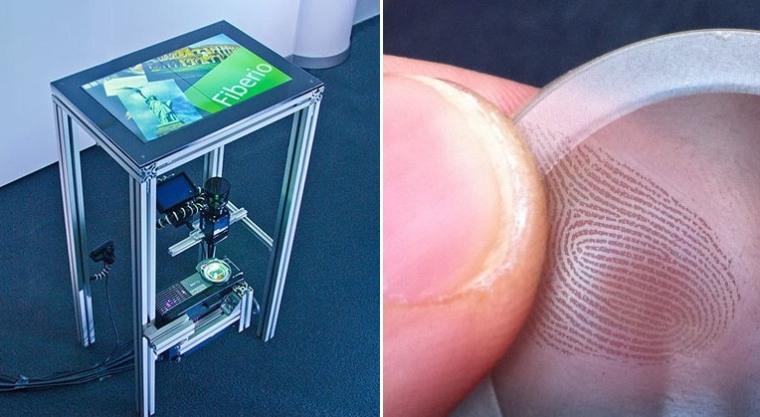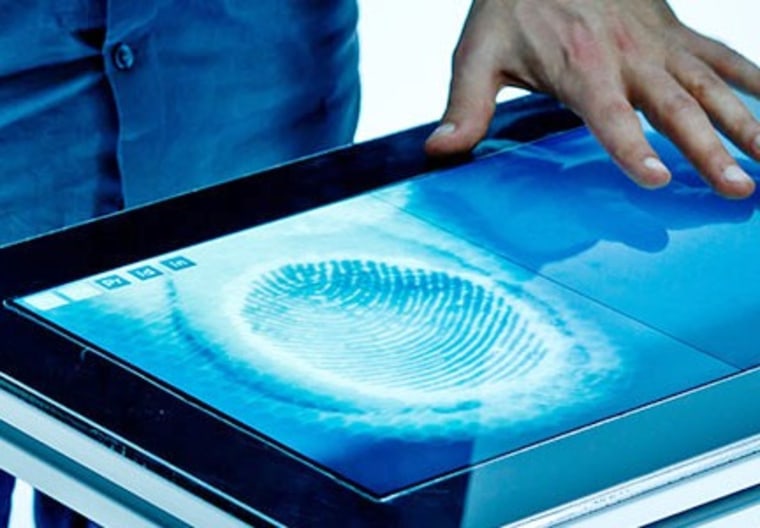Putting in a password or pattern every time you open your phone or tablet gets old fast — but what if your device could tell it was you holding it just from a single touch? This new touchscreen device can read your fingerprints as you use it — although it won't fit in your pocket any time soon.
The device, created by Christian Holz and Patrick Baudisch of the Hasso Plattner Institute in Germany, is called the Fiberio. It gets its almost superhero-ish name from a "fiber optic plate" that acts both as the display and fingerprint surface. The way it works is actually quite a bit like the original Microsoft Surface, relying on a similar projector/camera combo to put an image on a semi-opaque glass surface and watching that same surface for changes that indicate touches.

The Fiberio, however, takes things a step further than the Surface in precision. Its namesake fiber optic surface is composed of tiny glass fibers, six micrometers in diameter, and it has an interesting property: objects in contact with the surface (like the raised ridges of your fingerprint) appear dark, while things even slightly distant (like the valleys between those ridges) appear light.
As a result, the device's high-resolution camera can capture an image of a user's fingerprint as soon as they touch the screen.

Such a simple and quick security measure could be useful in many situations. Unlocking your phone, of course. But what about operating an ATM without a card or password? Just touch the "$20" button and it reads your fingerprint, checks your balance, and spits out the money.
A quick fingerprint scan in a hospital room or factory could show that the doctor or inspector was there and approved. A touch at the register could pay for your coffee without cash or a swipe (but don't forget to tip).
Unfortunately, there's no way the Fiberio could be packed into a tablet or phone. The way it works relies on being able to view the underside of the screen with a serious camera, something that won't fit into a quarter-inch-thick case.
In the meantime, the device is still compelling enough that it may start showing up in places where government and private industry can spare a bit of space. Police stations, medical facilities and banks could all benefit from quick and easy identity variation. Perhaps they'll be clued in after Fiberio's inventors present the technology at an upcoming computer interface symposium in Scotland this October.
— Via Technology Review
Devin Coldewey is a contributing writer for NBC News Digital. His personal website is coldewey.cc.